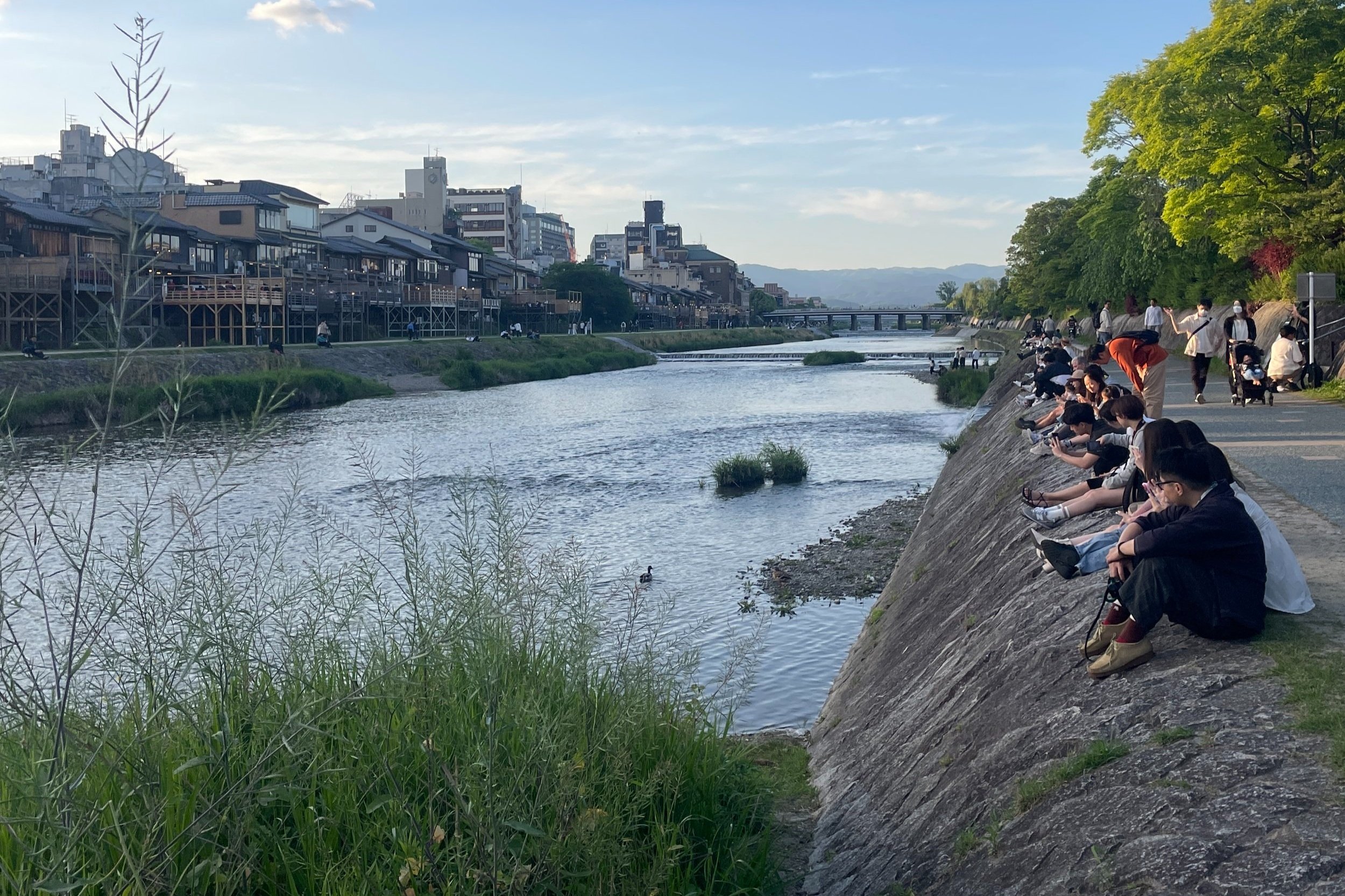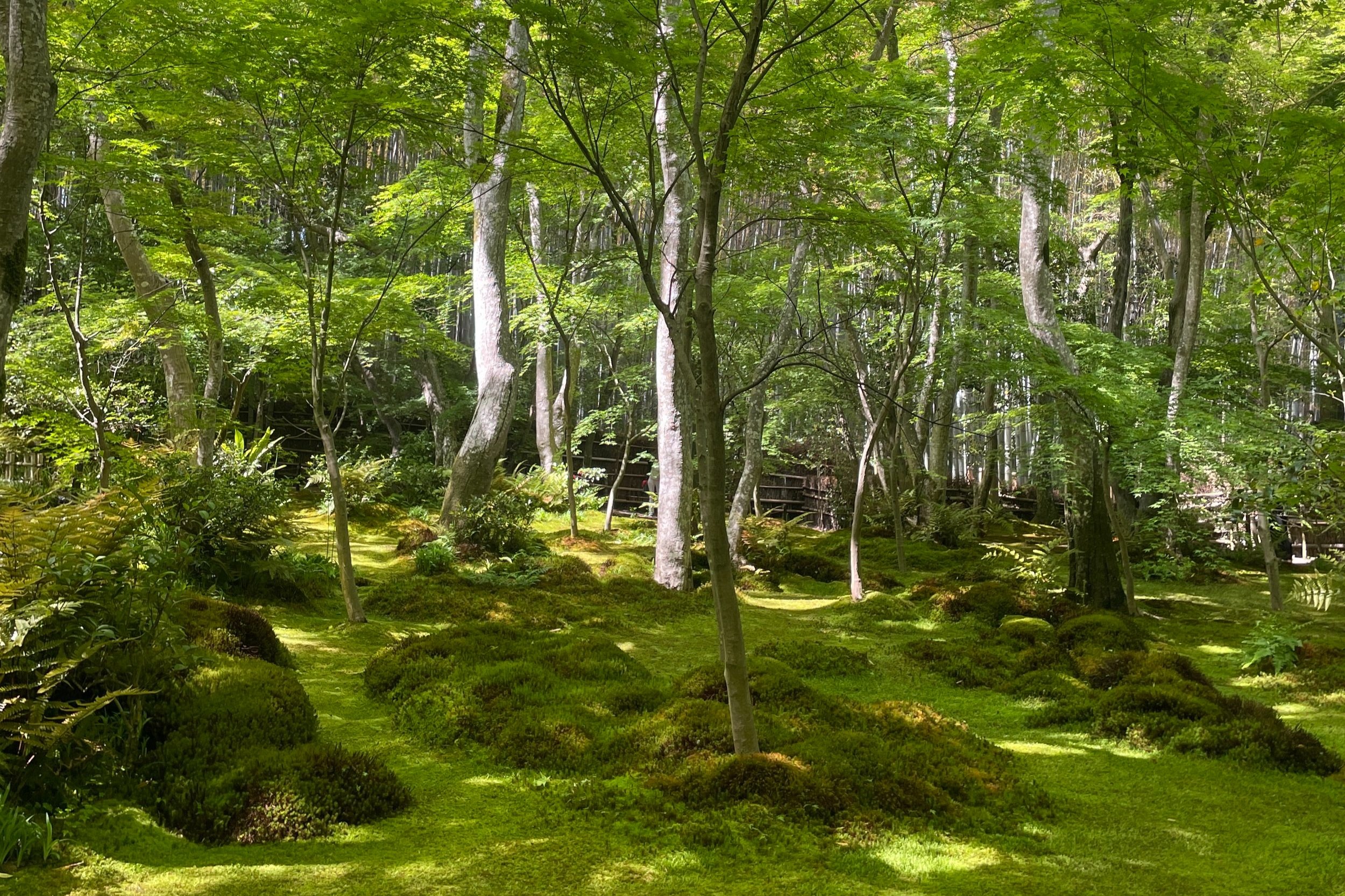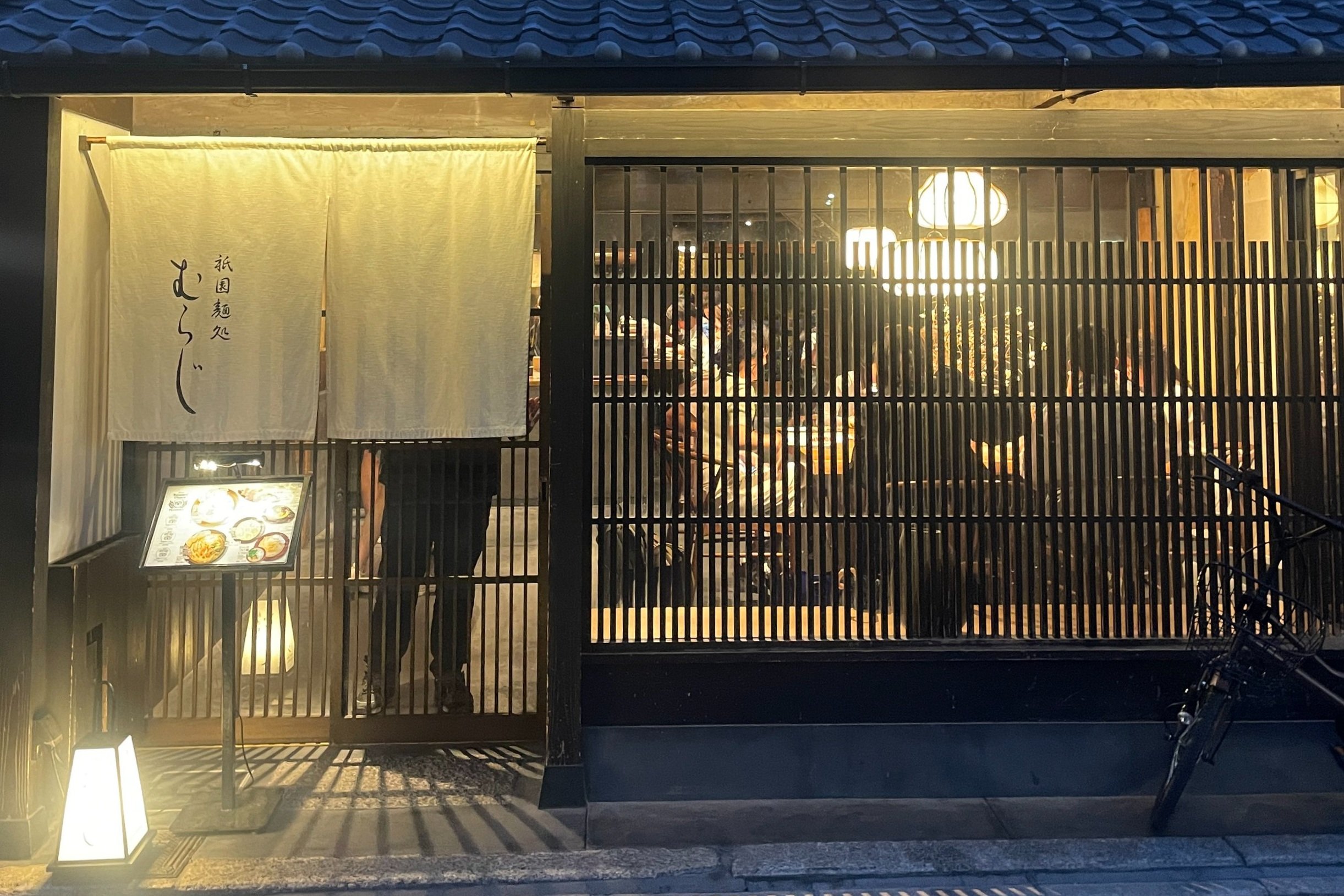How we spent three days in Kyoto
Kyoto was once the capital of Japan, and as such it’s packed with historic temples, palaces, and shrines. Unlike the much more modern-feeling Osaka and Tokyo, you can feel the history of Kyoto City on all of its streets, even in the city centre. You’ll often find yourself wandering past hidden shrines and minka on busy urban streets.
We caught the train from Osaka to the nearby town of Kyoto, which takes under an hour and costs about ¥630 (£3.25). We stayed in the Sanjo area, which isn’t far from Gion and Kawaramachi. When you’re looking for where to stay in Osaka, these areas are ideal as they’re in the middle of the shopping, dining, and historic areas and transport is easy. We chose to stay in the northern area of downtown Kyoto, having heard that south of the station doesn’t have much going on, and this turned out to be the perfect choice.
What is there to do in Kyoto?
I’m not sure it would be possible to fit all the shrines and temples into Kyoto even into a two week trip – let alone three days. But to be honest, you can get a bit templed-out in Japan. So for us, three days in Kyoto was perfect. These were our favourite things that we did in that time.
Nishiki Market
The bustling market in the centre of Kyoto is a great place to stop for lunch. There are so many stalls to choose from, selling sushi, fresh seafood, gyoza, tempura, sake… loads of easy grab-and-go things that can be eaten standing among the vendors. It can get busy during the day, but it’s a great Japanese food experience.
Kiyomizu-dera temple
This Buddhist temple is over 1,200 years old. The historic site is made up of a number of buildings sat half way up Mount Otowa. We walked through Gion to get here, which is super busy with tourists, many of whom rent kimonos from local stores to take photos in the traditional Japanese village.
It’s cute to see, but kind of annoying as people move veryyyy slowly. But at the temple the grounds are huge and the crowds disperse. And we found that at around 5pm we could wander the temple and its gardens fairly peacefully. You can pay ¥500 to enter the main area of the temple and walk further into the mountains. But this was also very busy, so we skipped it.
Walking along the Kamo river
We visited Kyoto during Golden Week and it was busy! So having been packed into a bus on our way to Gion we decided we didn’t want the same again on the way home. We walked north along the Kama River and crossed over Sanjō Ōhashi Bridge back into Sanjo.
On a warm spring evening it was a lovely way to spend half an hour – and definitely favourable compared to half an hour on a busy bus. Families, school kids, couples, runners, and cyclists were all wandering along the river path, stopping to play or have drinks or eat at one of the many cafes along the way.
Arashiyama Bamboo Forest
There’s no denying it’s busy. But the Arashiyama Bamboo Forest is still a lovely place to walk. And the further in you go, the more the crowds quieten down. We visited on a Friday, in the early afternoon which is peak time, and it still wasn’t as bad as some videos make it out to be. Plus you can easily walk to a huge number of temples and shrines while you’re in the area.
Giōji Temple
It’s easy to get a bit tired of temples in Kyoto, so we were selective about the ones we visited. But I think this was my favourite. Giōji Temple is a tiny shrine 15-20 minutes walk north of Arashiyama bamboo forest. The grounds are covered in moss giving it a magical feeling. It’s also much quieter than a lot of other shrines in the area and is only ¥300 (£1.50) per person to enter.
Adashino Nenbutsuji Temple
Less than half an hour’s walk from Arashiyama is the Adashino temple which also has its own small bamboo walk. It’s much quieter, and the grounds of the temple are beautiful. We spent about 20 minutes here and it cost ¥500 (£2.50) per person to enter. On a Friday afternoon there were only about 10 other people in the temple grounds at the same time as us, and even fewer in the bamboo grove.
Glanta ring workshop
In this cute ring shop you can choose your own ring and have it made in front of you, to match your exact finger size. I got two for 1980 each – meaning two brand new, bespoke silver rings for less than £20! The experience at Glanta took about 20 minutes (although we did have to queue) and it felt so fun and personal to watch the jewellery being made right there for us.
Kōdai-ji Temple and bamboo grove
Also close to Gion is the Kodai-ji temple that we actually visited because of its bamboo grove. Though much smaller than the famous Arashiyama Bamboo Forest, it’s much much quieter. We visited in the mid afternoon and only four other people were walking through at the same time as us.
Fushimi Inari
The famous mountain trail lined with red, engraved torii gates is one of the most famous things to do in Kyoto. We visited Fushimi Inari on a Saturday afternoon during Golden Week – a major Japanese holiday. And while it was busy at the start of the walk, the crowds soon thinned out and we could move at a better pace without people constantly stopping in front of us to take photos.
The walk up Mount Inari is about 4 km out and back, with a circular trail that covers the summit. We had read that it would take 2-3 hours but it actually took us less than 1.5 hours. We were at the peak within 45 minutes, and that included some photo stops and detours to look around the many shrines that line the path.
Even on a hot day, this wasn’t a strenuous walk. The 12,000 steps aren’t steep, so even the uphill was fairly easy to do in regular clothes. So don’t let the fear of crowds put you off. Complete the full 4km loop and you’ll find you have plenty of time to yourself to enjoy the peaceful surroundings and beautiful gates of Fushimi Inari.
Nara
You can make the day trip to Nara easily from either Kyoto or Osaka. We had longer in Kyoto so decided to fit it in during this part of the trip.
We picked up a pack of deer crackers and set out to pet and feed some of the hundreds of deer that roam Nara Park. It was a hot day so most of them were lying in the shade and weren’t that interested in boring crackers, understandably. But we did find a couple of hungry deer to feed before heading to a local sake brewery.
There are different train routes you can get from Kyoto to Nara, which cost around ¥1000-1800 (£5-8). It takes about an hour and Nara Park is about a 10 minute walk from Kintetsu-Nara station.
Nara Park is free to enter and you could spend anywhere from 30 minutes to 3 hours walking around it. There are a number of museums, temples, and shrines around the park including Tōdai-ji – the world’s largest wooden building which also contains the world’s largest bronze Buddha statue.
What’s the best way to get around Kyoto?
We actually used the bus more than the subway in Kyoto. It’s only made up of two lines, so it doesn't always serve the stops you’re trying to get to. Kyoto is also a fairly walkable city, so we were able to get to most of the temples and other sites we visited on foot.
What’s the food and drink like in Kyoto?
While not known for its food in the same way as Osaka, I was still pleasantly surprised by how great the restaurants were in Kyoto. Here were my favourite vegetarian restaurants in Kyoto that also serve meat dishes.
Nishiki Market - not a restaurant, but it’s not hard to find veggie snacks in this bustling market.
Sushitetsu - we queued 20 minutes for dinner here but it was worth it. Sushi ordered at the bar, with plenty of veggie options, and it only cost £20.
Sabou Sagano - close to the Arashiyama bamboo forest, this small Japanese restaurant has a few spaghetti options that don’t contain meat including a Japanese-style spaghetti made with soy sauce and veg.
Musashi Sushi - a conveyor belt sushi restaurant with plenty of vegetarian options that are all marked with a leaf on the menu.
FamilyMart - no I’m not joking. If you find a larger store, their selection of pastas, noodles, salads, and other to-go meals are actually a great option for a veggie lunch on days out.
Cafe de Nature - this small cafe near Nara Park marks the different meats used in each dish so you can understand the ingredients without reading Japanese.
Find out more about our full one month in Japan itinerary here.










